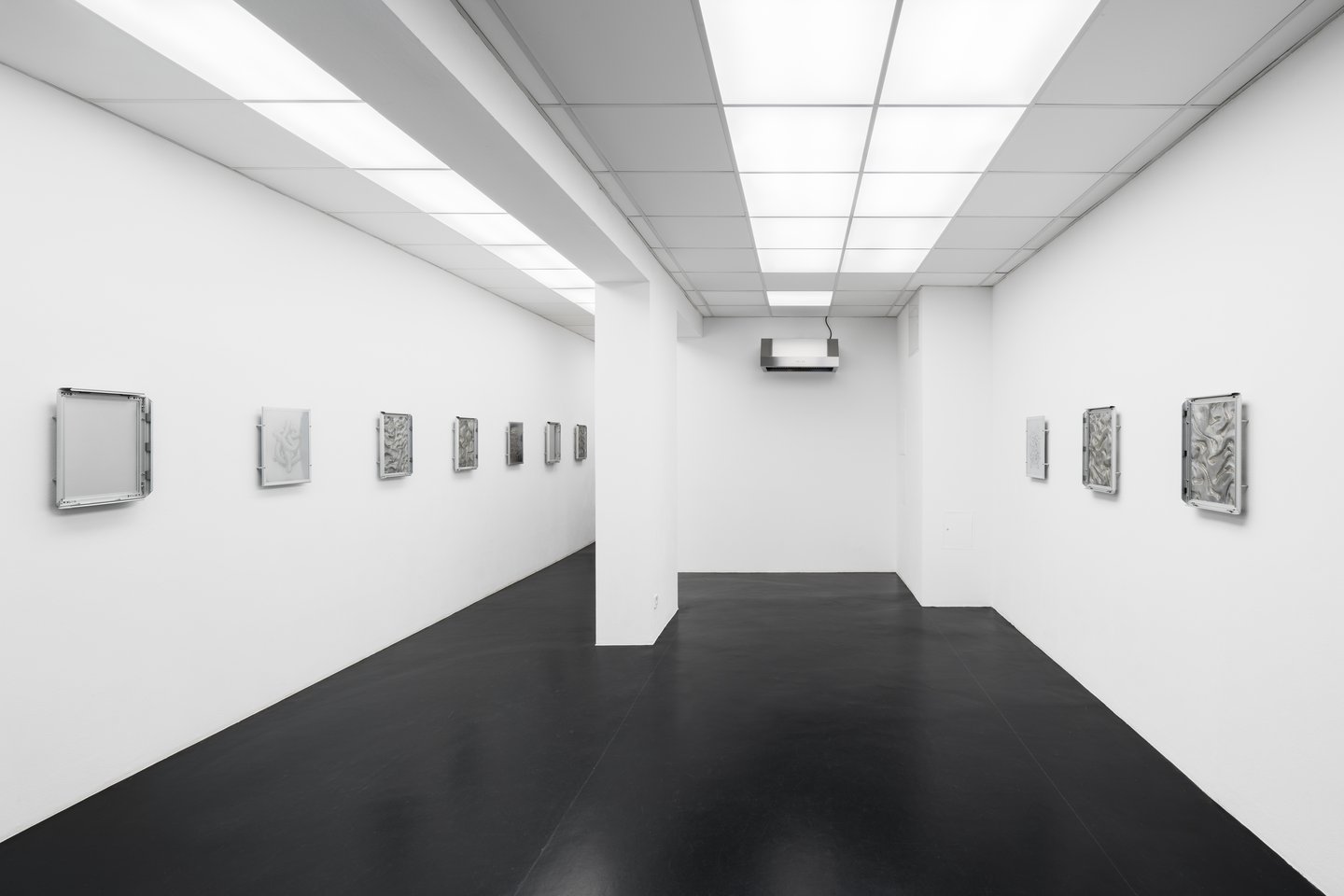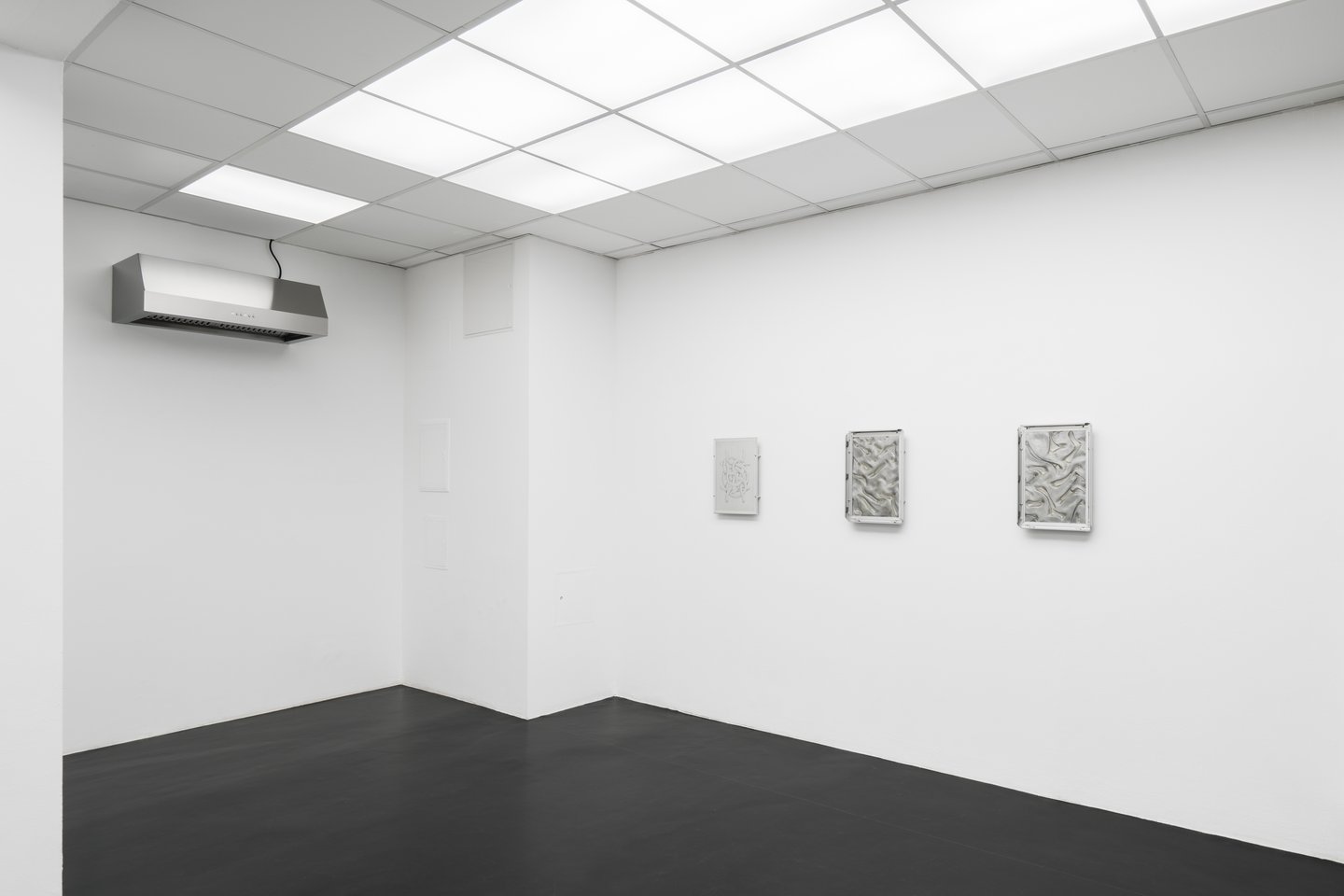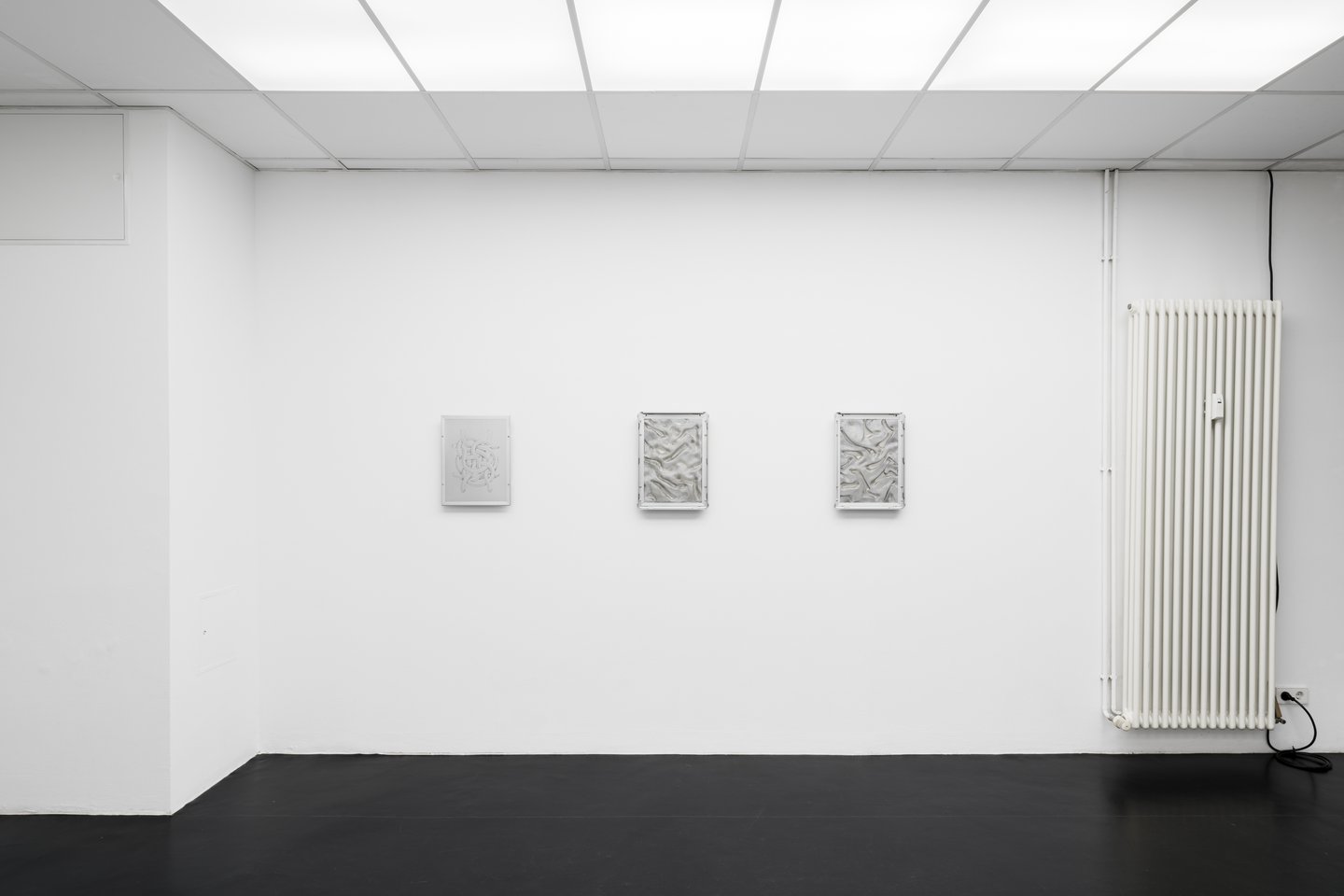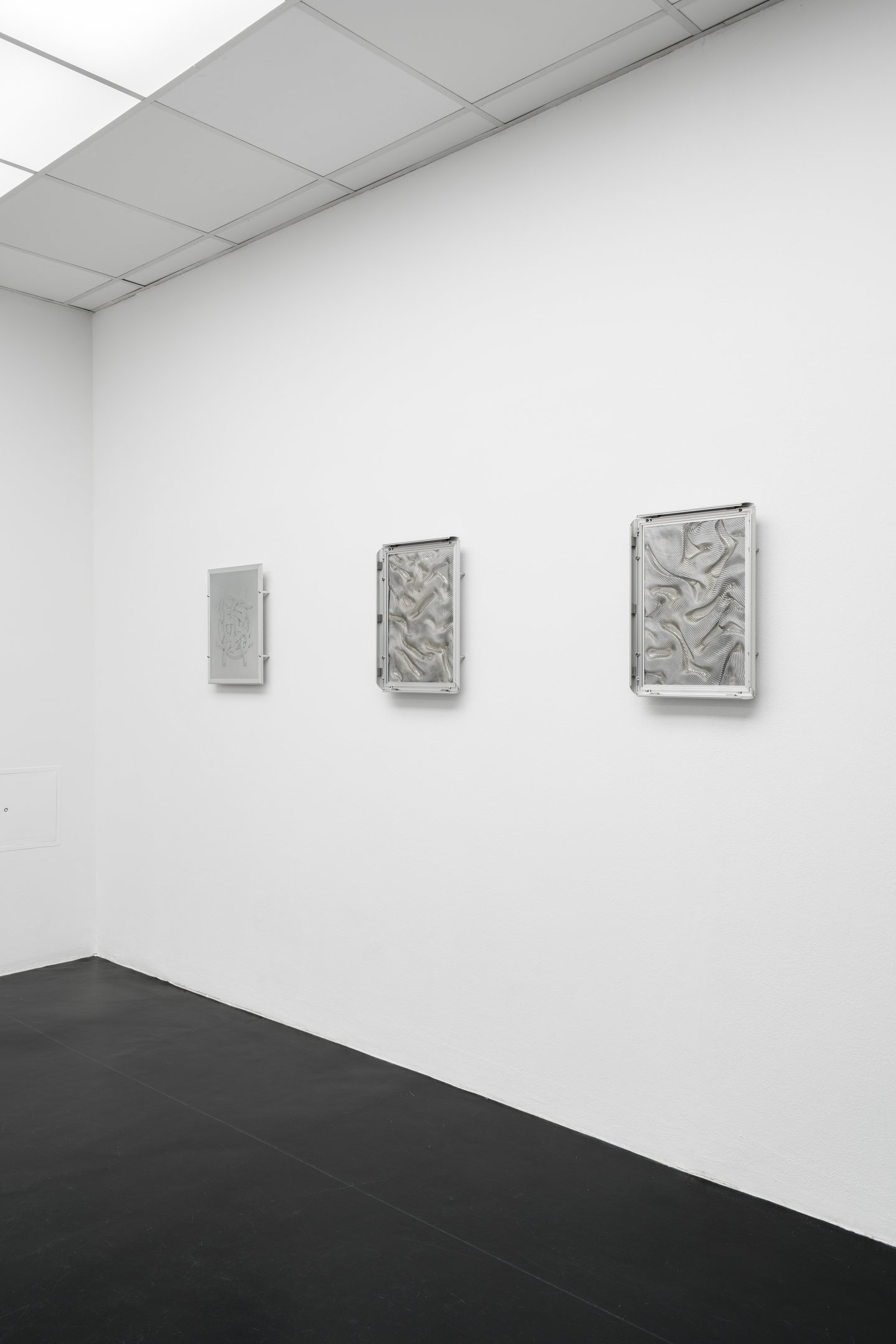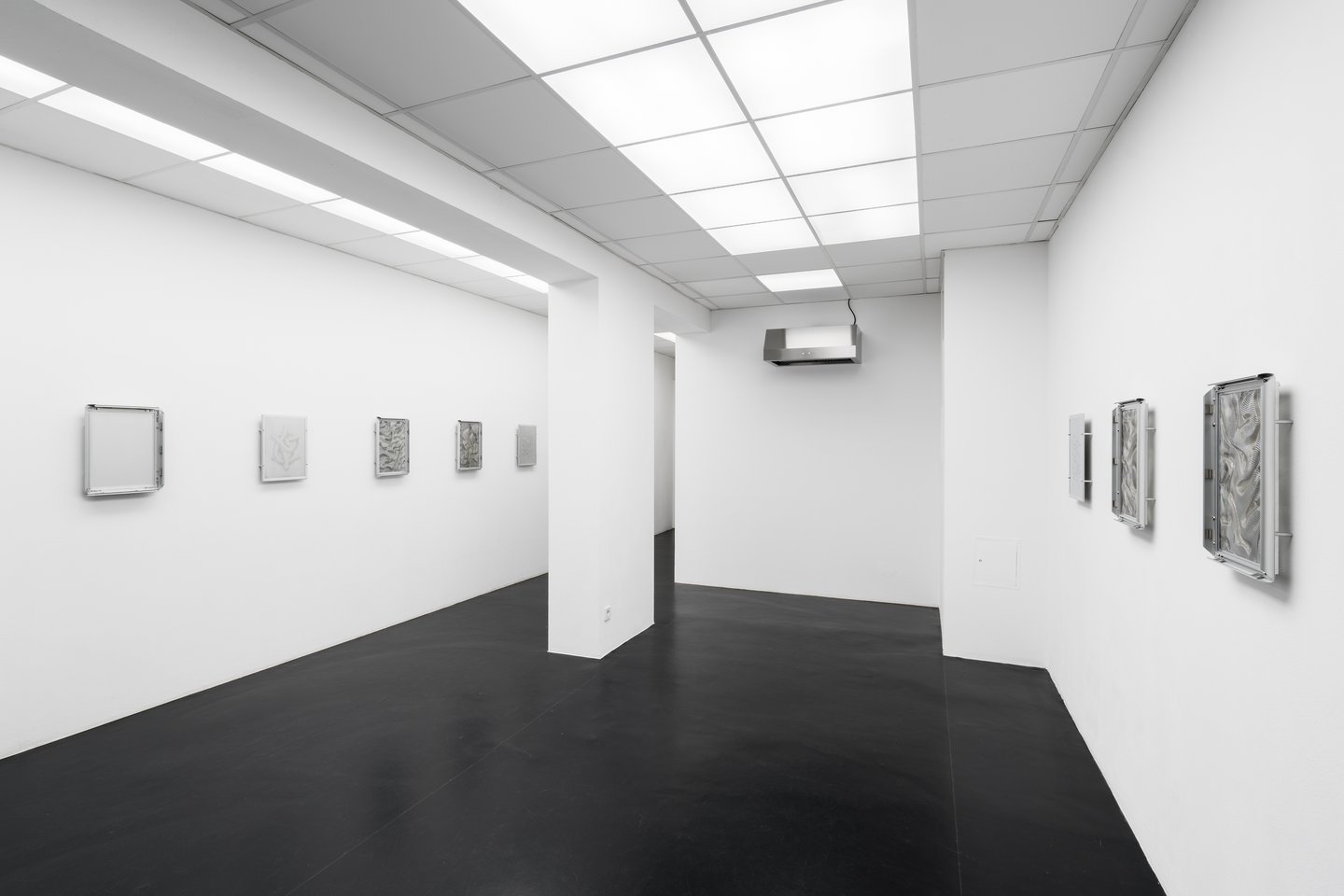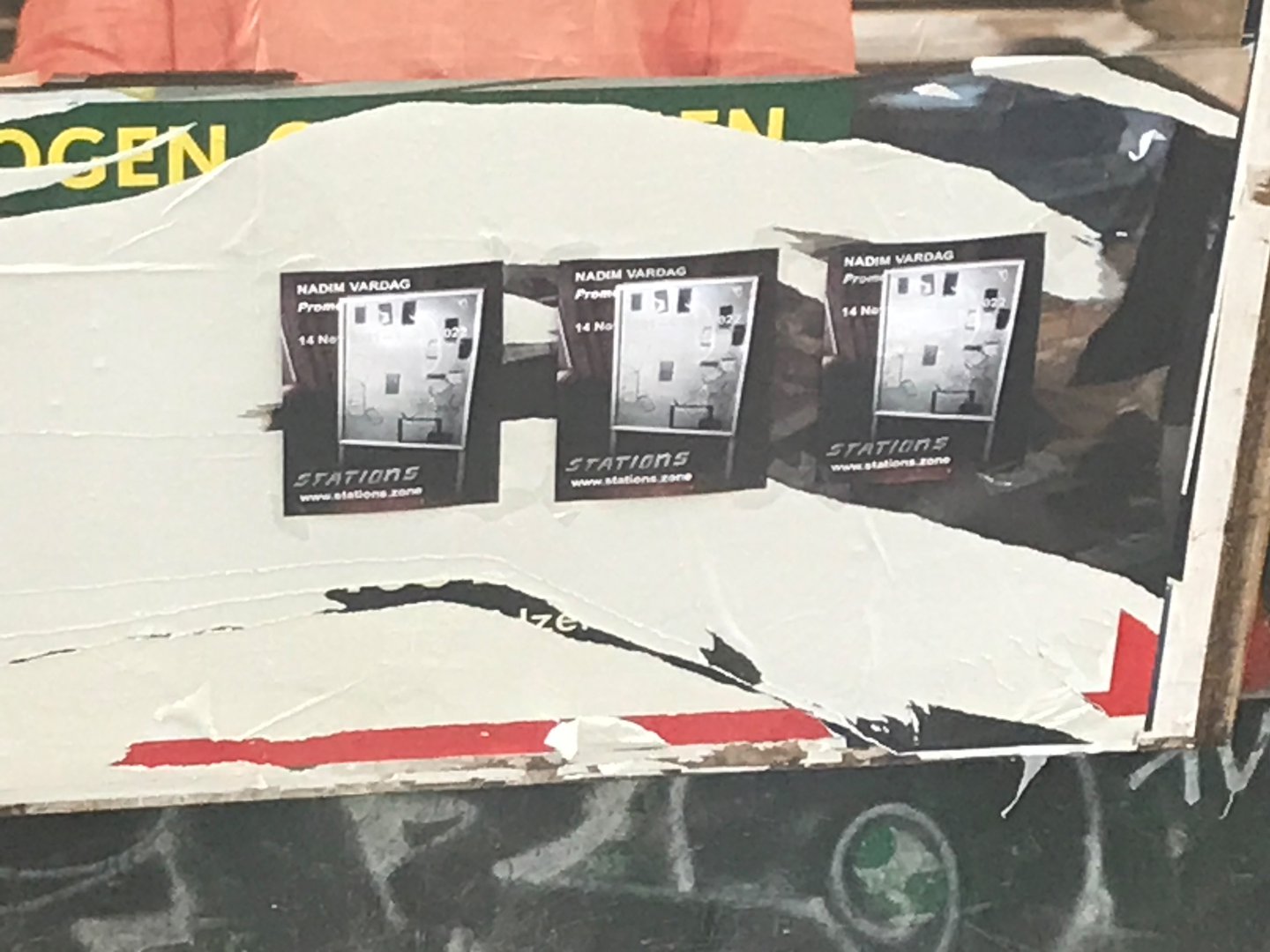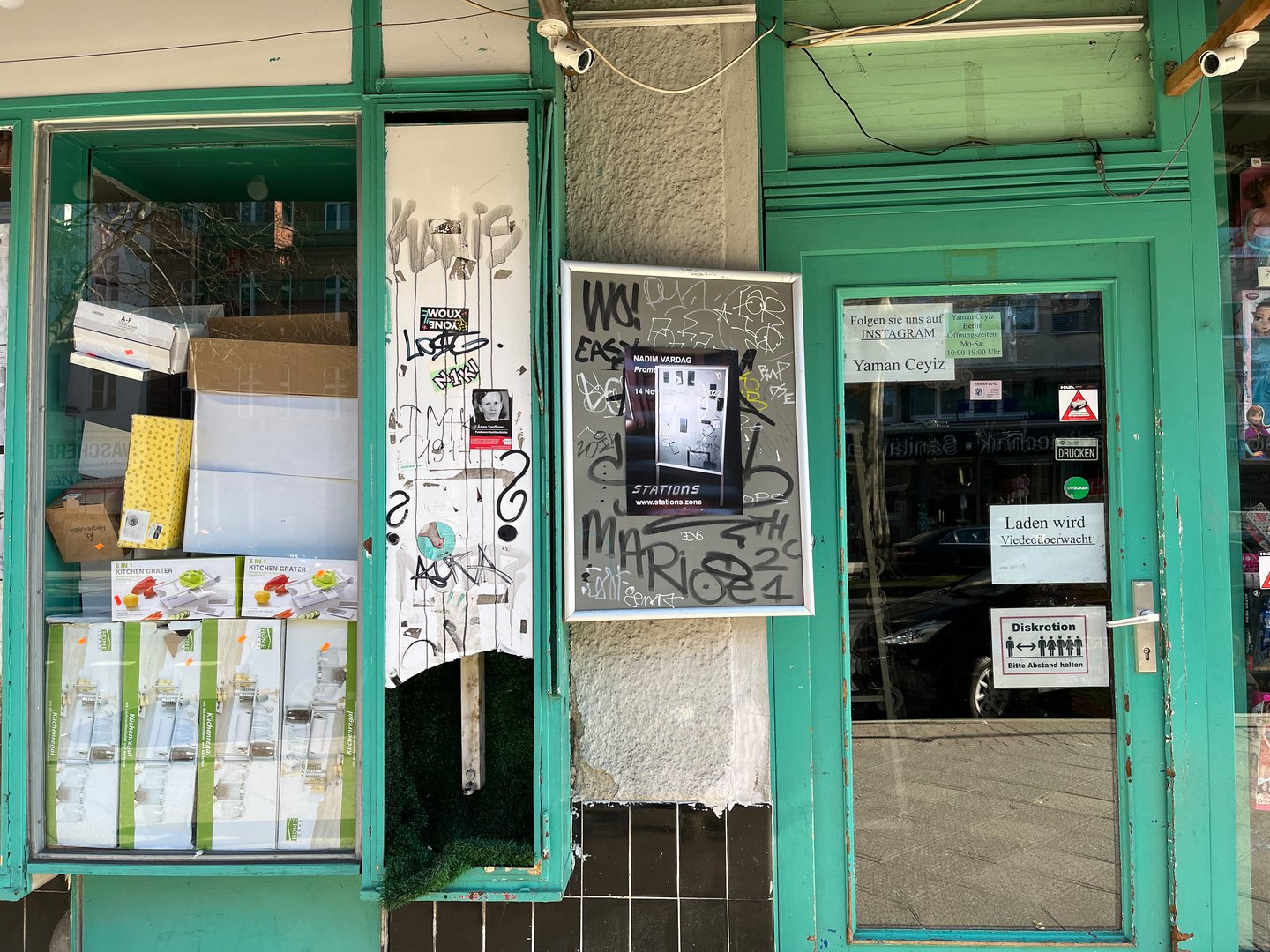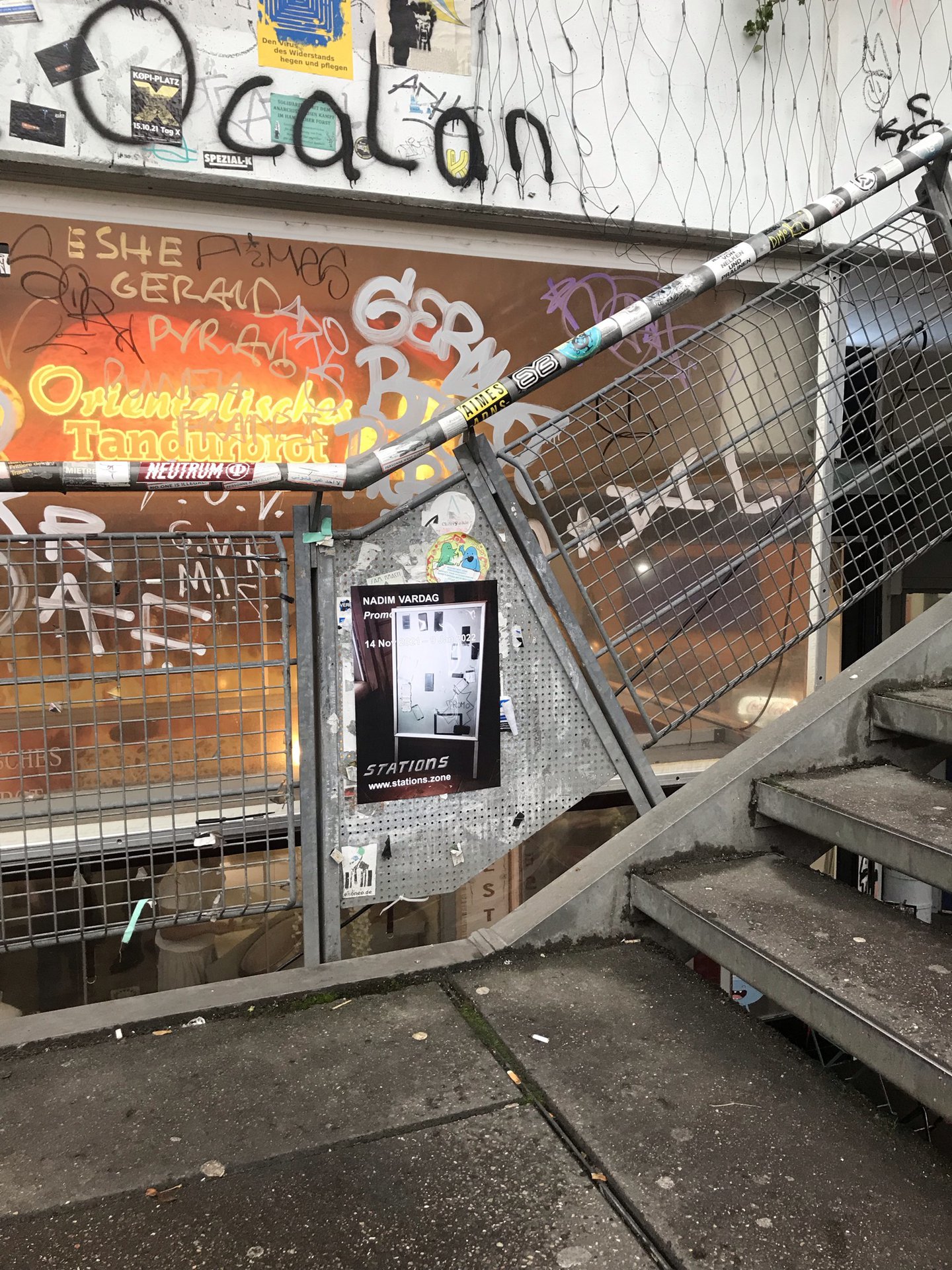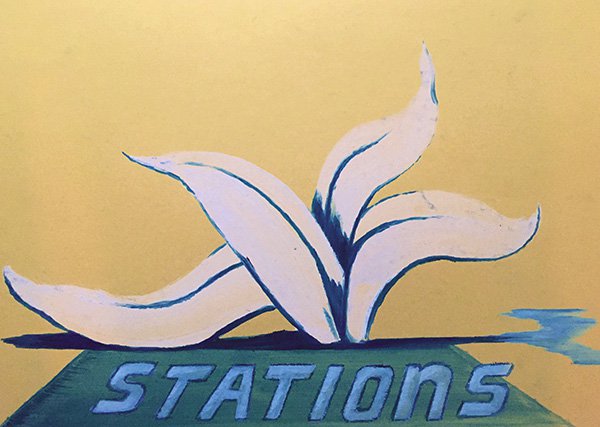In der Ausstellung Promo zeigt Nadim Vardag eine Serie von neuen Metallobjekten. Zehn Wandarbeiten, die exakt entlang des Deckenrasters installiert sind, verweisen auf die Funktion des Rahmens (Bild-)Information ein- und auszugrenzen und verweigern diese gleichermaßen. Die verwendeten Klapprahmen sind als Werbeträger im öffentlichen Raum omnipräsent und hier in aufgeklapptem Zustand Hüllen, die hier entweder in Epoxidharz gegossenes Aluminiumgewebe mit Faltenwürfen oder blanke Aluminiumplatten zeigen. Weitere Varianten sind in Metallrahmen eingefasste Druckplatten, die knoten- und gewebeartige Strukturen abbilden und die Vardag als eine Art Bildspeicher für seine Kaltnadelradierungen dienen. In der präzisen Machart wird der Bildträger selbst zur Skulptur, die Objekthaftigkeit wird durch den Abstand zur Wand zusätzlich verstärkt. Die Information wird rückgekoppelt, ähnlich wie bei der Dunstabzugshaube, die die aufgesaugte Luft wieder in den Raum zurückleitet. Das Setting mit den präzise aufgereihten Objekten gleicht einem 3D-Rendering im physischen Raum.
////
In the exhibition Promo, Nadim Vardag shows a series of new metal objects. Ten wall works, installed exactly along the ceiling grid, refer to the function of the frame to contain and exclude (pictorial) information, while simultaneously denying it. The snap frames Vardag uses, omnipresent and common to the apparatus carrying ad images in public spaces, are shown here unfastened, opened to fully expose their contents: folded aluminium fabric, cast in epoxy resin, or bare aluminium plates. Other variants are frames that enclose printing plates depicting finely engraved knot- and fabric-like structures, which Vardag uses to print his drypoint etchings. Suspended with great technical precision at a distance from the wall, these usually “invisible” mass-produced frames are here converted into sculptures, consolidating the support and its (visual) contents into a closed circuit. Referencing the very same process of this input/output feedback loop, a working extractor hood, positioned just below the ceiling, guides the absorbed air back into the exhibition space. The setting with its rigorous line-up of image-objects itself translates the accurate execution of a 3D rendering into physical space.
